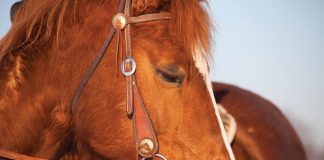
A: Sometimes the tiniest fraction of a millimeter is all it takes to set off a pain cycle in the foot. In this case, your horse probably experienced a “hot” nail.
A hot nail refers to a horseshoe nail that irritates the sensitive laminae within the hoof sufficiently to create an inflammatory response of pain and swelling. A nail does not necessarily have to be driven directly into the sensitive laminae to cause a problem; even a small part of a nail seated against the sensitive tissue can create sufficient pressure and inflammation. A nail driven high on the face of the hoof wall is more likely to become a hot nail as can a nail moved within the hoof by a twisted shoe. Also, thin-walled horses are more prone to being “quicked” since there is less wall thickness for a farrier to work with. A fidgety horse also makes it a challenge for the farrier to seat the nail properly.
A hot nail is rarely a career-threatening problem, but it does set back your training and competition schedule. The first order of business is to pull out the problematic nail, and remove the shoe to relieve pressure from the area. Then the suspect nail hole is pared out to facilitate drainage and treatment – this is probably something you’d rather have your vet do. Your vet will use hoof testers to identify the extent of your horse’s soreness and the location for opening an abscess. Several days of Epsom salt foot soaks further help to draw out infection. A protective boot then protects the hole from dirt, gravel or shavings and allows the horse to be turned out, which is good for encouraging drainage and circulation for healing.
It is important that your horse is current on his tetanus vaccine (within the last six to nine months) as nail punctures are ripe areas for growth of anaerobic organisms, such as Clostridium tetani, the bacteria responsible for tetanus. Once the nail hole has been opened for adequate drainage, it usually isn’t necessary to give the horse systemic antibiotics. Once pressure has been relieved, your horse will feel better. It’s probably smart to wait a week or so for full resolution before having the shoe tacked back on.
This article originally appeared in the December 2015 issue of Horse Illustrated magazine. Click here to subscribe!






